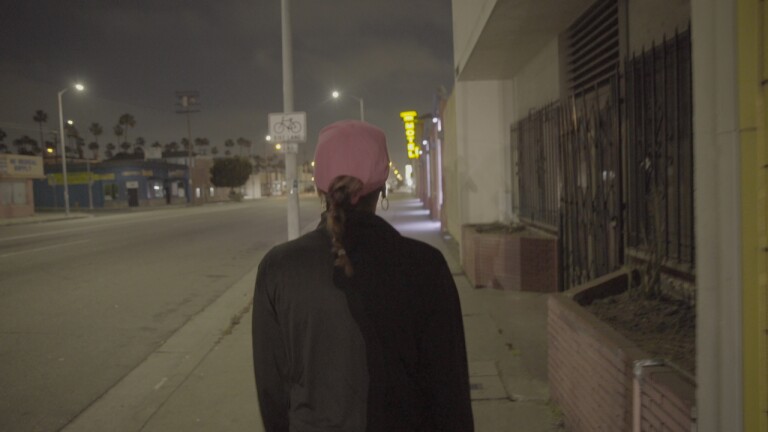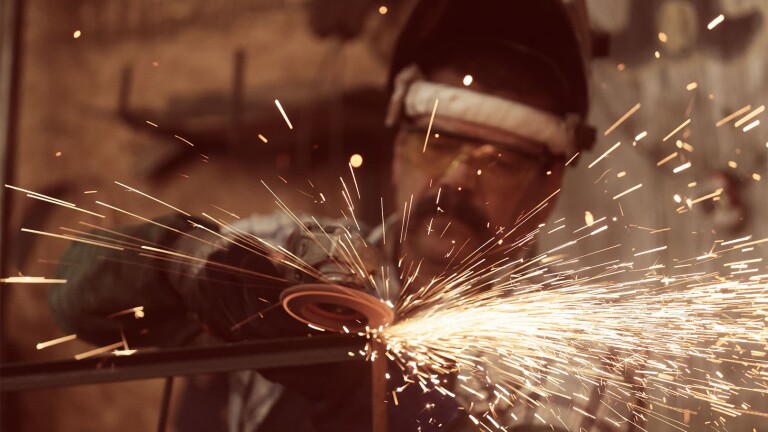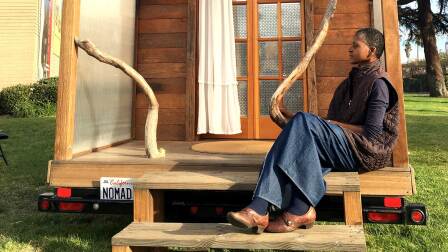
Breathing New Life Into Taxidermy
Taxidermy is very much alive at the Natural History Museum of Los Angeles County, where specimens from across the animal kingdom -- owls, eagles, rabbits, cats (elephants, polar bears, bison) -- are put on display in vivid dioramas. It's safe to say that this job is not for the faint-hearted. But while museums around the country have trimmed their taxidermy staffs, the NHM's Tim Bovard -- along with volunteers -- continue to preserve and mount new specimens.
With the right amount of precision and attention to detail, taxidermy becomes equal parts hard science and interpretive art. Taxidermists are careful not to distort or take away from the essence of an animal, while still attempting to convey a story of the animal's existence by manipulating poses and backdrops.
When it comes to the animals themselves, it's as though the taxidermists are in a surgery room, making incisions while preserving a piece of art that will be examined with fascination by the public. Now a new generation, led by Bovard's apprentice Allis Markham, has begun to revive taxidermy.
Reporter Conor Knighton gets a behind-the-scenes tour of the museum's renowned taxidermy wing with resident taxidermist Tim Bovard, who has worked for decades delicately preserving, mounting, and preparing thousands of deceased animals for the museum's many exhibits. Then, Knighton visits Prey Taxidermy in downtown Los Angeles, to see who the future taxidermists of Southern California are.
Featuring Interviews With:
- Tim Bovard, head taxidermist, Natural History Museum
- Kathy Eubanks, taxidermy student
- Roberta Koo, taxidermy student
- Allis Markham, founder, Prey Taxidermy
Transcript
Conor Knighton: Los Angeles’ Natural History Museum has a Savannah Elephant, an American bison, an endangered Arabian orcs, but in a small office of a fourth floor, it has something even rarer: A full-time taxidermist.
Tim Bovard: When I say I’m a taxidermist, people are like, “well you seem pretty normal.”
Conor Knighton: Tim Bovard has worked at the museum of Natural History for over 30 years. In the world of taxidermy, that makes him pretty unique. Although there used to be hundreds of full-time taxidermists across the country, today those jobs are all but extinct. Dioramas, the incredibly detailed full-sized displays of the animal kingdom aren’t the draw they once were.
Tim Bovard: For a lot of museums, they went away from that. They were like TV, and now they can do video, but of course that’s different from having the immediacy of the real scene.
Conor Knighton: Those scenes are what inspired Bovard to become a taxidermist.
Tim Bovard: From a kid, I wandered these halls and looked in at those dioramas and I was fascinated because I was fascinated by nature.
Conor Knighton: Preserving the outdoors indoors is a science, but it’s also an art form. One that often goes unappreciated.
Tim Bovard: I know fair numbers of taxidermists who got out of taxidermists because they were accepted as artists if they did bronzes or sculptures or wood carving, and not as much as the taxidermist.
Conor Knighton: For Bovard, the art, and the challenge of taxidermy comes down to one thing.
Tim Bovard: What’s the story we’re trying to tell is really all about telling the story. I would probably lean towards relaxed over action poses. But to tell the story we need all of that.
Conor Knighton: In one of the museums’ many freezers, Bovard keeps his cast of characters, each waiting for its star turn.
Tim Bovard: An Amazon parrot.
Conor Knighton: Oh my gosh, does anyone ever put their lunch in here accidentally?
Tim Bovard: [laughs] No. I’m actually very careful because not everybody here is into dead stuff.
Conor Knighton: But recently, dead stuff has taken on new life. Online, there’s a growing community of vulture culture blogs, focusing on taxidermy and related fields. And among this new generation of taxidermy enthusiasts, Bovard has noticed a trend.
Tim Bovard: They’re women. And that’s a really within the last 7-8 years. And it’s not just here, it’s across the country and in other parts of the world.
Conor Knighton: Allis Markham quit her lucrative marketing job at Disney to study taxidermy with Bovard. Relatives thought she might have breathed in too much formaldehyde.
Allis Markham: Part of my family was like, “are you sure. Like are you okay? Have you talked to your therapist?”
Conor Knighton: But Markham wanted to work with her hands and she watned to learn from the best in town.
Allis Markham: I literally stalked him and showed up every day until he was too embarrassed not to hire him. That’s what I did.
Conor Knighton: Markham eventually opened Prey, her own successful taxidermy studio in the heart of Downtown L.A. She’s won awards at the Taxidermy World Championships, and has discovered an untapped market, teaching others who are as curious as she was.
Allis Markham: Our unofficial motto is we are the only game in town. Yeah, it’s a good pun.
Conor Knighton: Prey offers classes like Birds 101, and Baby Racoons. Tonight is Skinning, Tanning, and Bone Cleaning. Markham provides the tools and the specimens, all you need to bring, is a strong stomach.
Allis Markham: I put my thumb, right there on the nose, and I start to make a circle all the way around as I push, remember that tension is your friend.
Conor Knighton: Getting this up close and personal with anatomy, that’s part of the draw.
Student: It’s sort of like you know how an engineer looks at a TV and says I wonder how that works. It’s the same thing with taxidermists, you can look at an animal and be like how does that work. You can see the muscles…
Conor Knighton: Kathy Huebanks drives all the way from Fullerton for classes.
Kathy Huebanks: This is actually what I’m doing to relax before finals next week, so…
Conor Knighton: Student Roberta Ku has come for a more personal reason.
Student Roberta Ku: I eventually want to taxidermy my rooster.
Conor Knighton: What’s your rooster’s name?
Student Roberta Ku: Pee-Wee.
Conor Knighton: And is Pee-Wee is alive right now? Or not alive?
Student Roberta Ku: Oh yes he’s definitely very much alive, but we’re hoping he’s going to live another 10-20 years, but at that point I want to be ready.
Conor Knighton: And who better than to capture Pee-Wee’s spirit than the woman who knows him best. Have you told Pee-Wee’s plans yet?
Student Roberta Ku: No, I have not told Pee-Wee. But he did keep all the feathers he’s losing. Because I’m going to need them well.
Conor Knighton: Most of the animals at Prey aren’t pets. Raccoons come from pest control workers who might have otherwise thrown them out. And other animals have died in captivity.
Allis Markham: A lot of things I get just die at zoos, aviaries; I’ve got a couple of tiger cubs, as you do.
Conor Knighton: And some of the animals, like the endangered panda, are complete recreations made up of died fur from other animals. I practiced on a less exotic specimen, the common squirrel. And while I may not be cut out for it.
Allis Markham: I’m going to open up the squirrel’s little legs.
Conor Knighton: I’m sorry, buddy.
Allis Markham: He’s dead, he doesn’t feel anything. You’re the victim here.
Conor Knighton: Alright, I’m just embarrassed for him. Markham keeps adding classes to meet a growing demand. This modern wave of taxidermists is looking for a more old-fashioned experience.
Allis Markham: So many people spend their day in front of the screen that they want to get home or wherever it is and they want to do something with their hands again.
Conor Knighton: In Allis’ hands, the future of taxidermy in Los Angeles appears to be well taken care of.
Tim Bovard: Because of Allis’ impact I think of going out and starting a studio where she does teach. There’s more people right now that I know that want to volunteer here and would be useful to me than I have space to utilize, and that’s really unusual. That’s very special.
Conor Knighton: I’m Conor Knighton for “SoCal Connected.”























